Introduction to the Piper Jetprop DLX
This weekend I was invited to join a flight with two German friends in their own Piper Jetprop DLX aircraft. Even though I do not have the proper class/type rating for this specific type of aircraft (a PA46 class rating), they let me fly their plane with one of them sitting in the right hand seat. To be honest, I was thrilled about the performance of the aircraft and the flights. What a beast and performance this airplane has.
The flight started early Saturday morning at EDLD – Dinslaken/Schwarze Heide Airport. That airport is situated just near our home in Doesburg. We just drive about 10 km to the highway (A12) which runs into Germany and becomes the A3. Then after about 25 minutes, all I have to do is take exit 8 and drive for a few more minutes to arrive at the Dinslaken airport.
Sønderborg Lufthavn (EKSB)
Our first destination was Sønderborg Lufthavn (EKSB) in Denmark. The flight took just over one hour and 15 minutes after we initially climbed at close to 1750 feet per minute to an altitude of 24.000 feet (FL240).
The Piper JetProp, also known as the PA46-DLX, is a standard Piper Mirage or Piper Malibu aircraft which is then converted by the company JetProp to a high performance TurboProp aircraft. It is built for economic, flexible and fast flight operations and can be called a private airliner. The aircraft is fully IFR licenced and also certified for known icing conditions (FIKI=flight-into-known-icing). It has a 560 HP turbine-engine in its long nose with a propellor still in the front. It is an overpowered propellor-driven aircraft, seats a maximum of 6 people and flies at about 255 knots TAS, which is almost 500 km/hour.
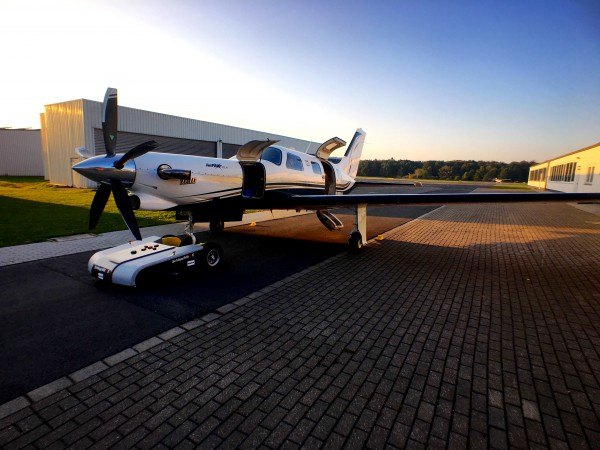
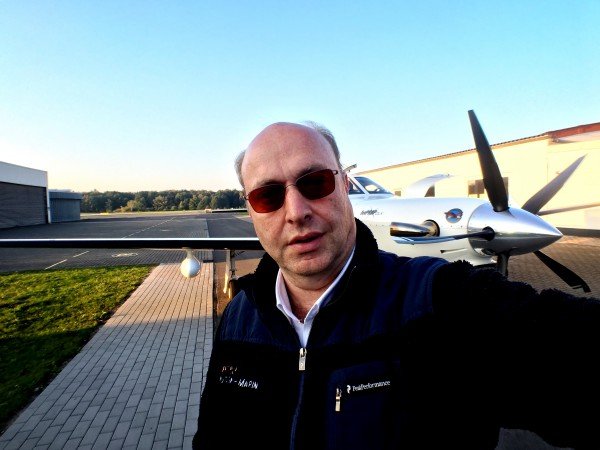
In the Cirrus SR22 Turbo aircraft which I have been flying so far myself during the last few years, there is no pressure cabin. Flying the Cirrus at higher altitudes meant that I would then have to breathe pure oxygen from an oxygen bottle. However, this Jetprop aircraft is equipped with a pressure-cabin and thereby takes care of this oxygen inconvenience. The pressure inside the aircraft can be regulated and is not just the same as the outside air-pressure as with the Cirrus non-pressurized aircraft. This pressure-cabin feature alone provides not only for more comfort to the crew members sitting up front, but also provides extra comfort to the passengers sitting in the back.
The cockpit of the Jetprop DLX is different from the Cirrus SR22 Turbo aircraft. In the Cirrus, I was used to flying the Garmin Perspective glass-cockpit while in the Jetprop, the cockpit instrumentation is modern, but not as integrated as with the Garmin Perspective as in the Cirrus SR22 Turbo aircraft.
The island Sylt
From Sønderborg we flew to Sylt for lunch in town while enjoying the great sun still out there in the fall. From Sylt we flew first back to Dinslaken to then fly to Zwartberg in Belgium for fuel as the price of Jet-A1 fuel there is a lot cheaper than in Dinslaken.
As you can see, there is lots of room in the back for passengers and luggage. After a great day of flying we flew quickly to Zwartberg Airport near Maastricht for refueling and then returned back to Dinslaken. The last picture shows the sun setting over Dinslaken airport with the Jetprop DLX still outside the hangar. I am thankful for the opportunity I got to fly along on this trip and to be introduced to such a great aircraft.
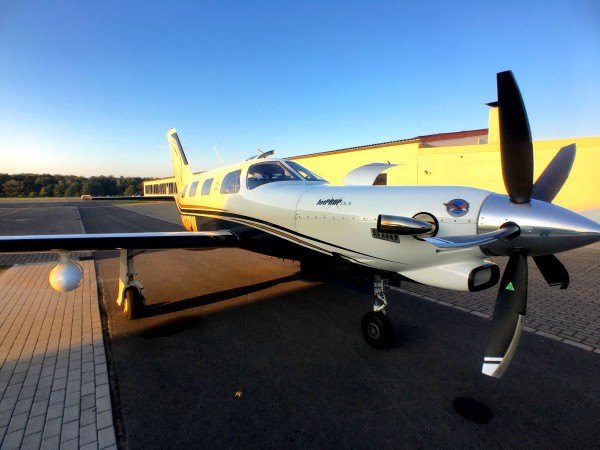
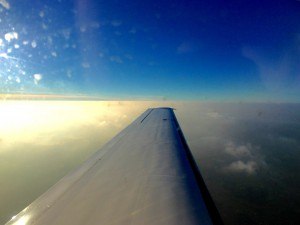
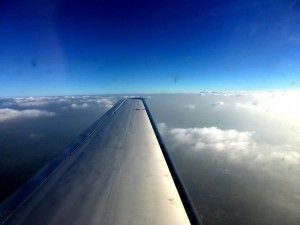
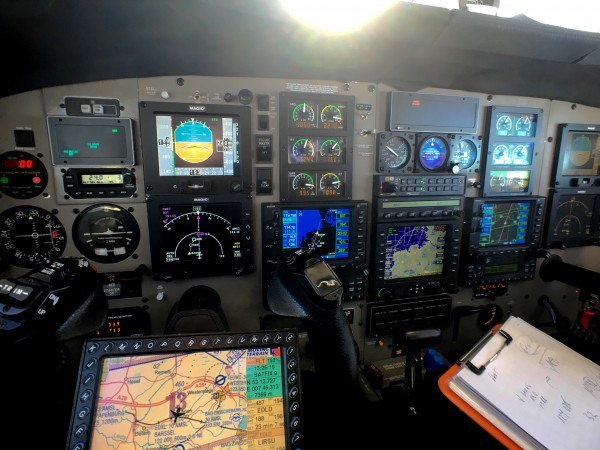
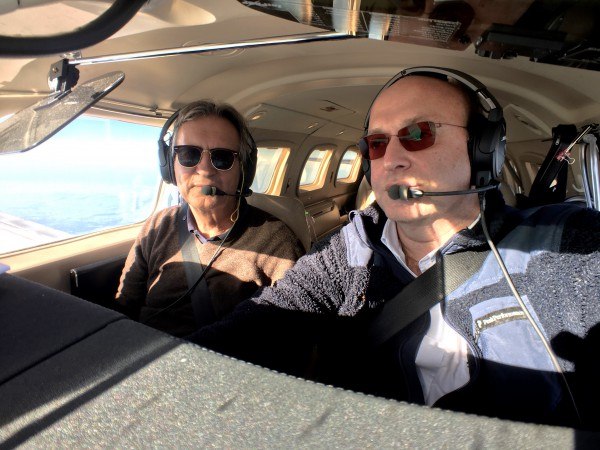
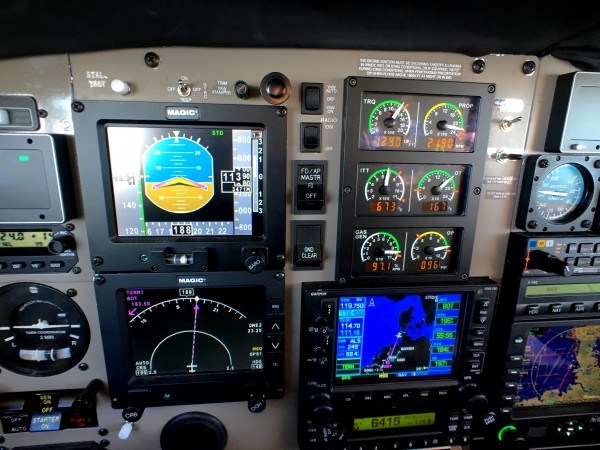
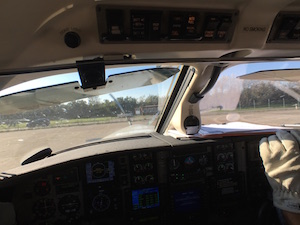
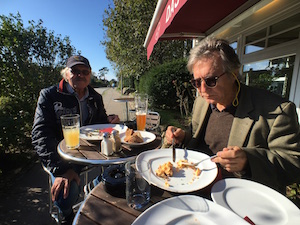
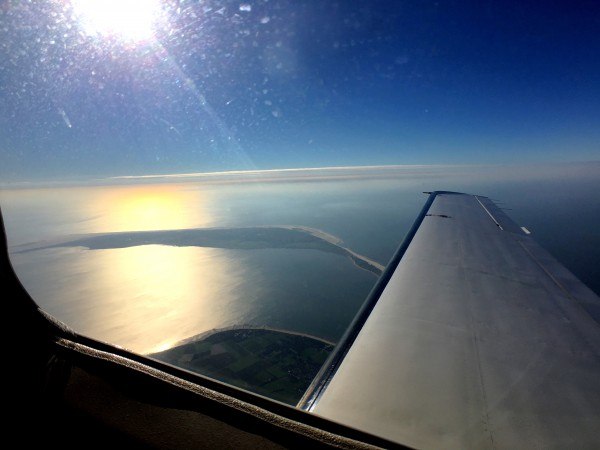
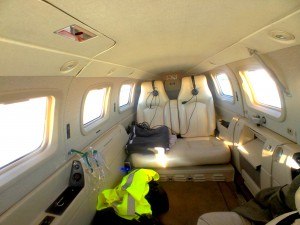
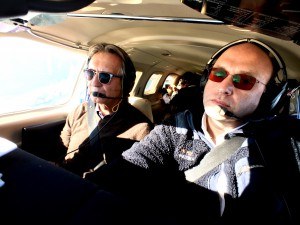
seo says
http://www.allods.net/redirect/siliconpopculture.com/?URL=testmika.ru http://www.bsvesinet.fr/localisateur/proxy.php?url=xtblogging.yn.lt/index.wml/__xtblog_entry/306397-trik-mengganti-nama-fb-sepuasnya?__xtblog_block_id=1&name=moderator&site=testmika.ru http://www.morrowind.ru/redirect/bismarckheating.com/?URL=testmika.ru http://www.gta.ru/redirect/boosterblog.com/vote-815901-624021.html?adresse=testmika.ru https://12roundproductions.com/x/cdn/?pin.anime.com/source/testmika.ru http://www.allods.net/redirect/xtblogging.yn.lt/index.wml/__xtblog_entry/306397-trik-mengganti-nama-fb-sepuasnya?__xtblog_block_id=1&name=moderator&site=testmika.ru http://www.bsvesinet.fr/localisateur/proxy.php?url=obadoba.de/?URL=testmika.ru http://ime.nu/premiumoutdoors.com.au/?URL=testmika.ru https://12roundproductions.com/x/cdn/?reedring.com/?URL=testmika.ru https://myfoodies.com/recipeprint.php?link=onfry.com/social/?url=testmika.ru http://www.allods.net/redirect/promostore.co.uk/?URL=testmika.ru http://goob.block.land/?url=f48.ee/?url=testmika.ru http://www.morrowind.ru/redirect/w3seo.info/Text-To-Html-Ratio/testmika.ru http://stewd.io/windmaker/windmaker.html?zip=10002&url=leefleming.com/?URL=testmika.ru http://mx2.radiant.net/Redirect/mbexpert.nl/?URL=testmika.ru https://gruzovoy.ru/forum/public/reviews/json.php?url=civicvoice.org.uk/?URL=testmika.ru http://www.webbuzz.ca/testing/phptest/demo.php?video=andy&url=rideoutfilms.com/?URL=testmika.ru https://gruzovoy.ru/forum/public/reviews/json.php?url=yiwu.0579.com/jump.asp?url=testmika.ru https://smmry.com/essencemusicagency.com/?URL=testmika.ru http://ime.nu/theaustonian.com/?URL=testmika.ru http://www.morrowind.ru/redirect/nun.nu/testmika.ru https://tancon.net/x/cdn/?extcheer.com/?URL=testmika.ru https://gruzovoy.ru/forum/public/reviews/json.php?url=greenhomes.hu/?URL=testmika.ru https://smmry.com/mccawandcompany.com/?URL=testmika.ru https://smmry.com/cafe10th.co.nz/?URL=testmika.ru http://www.allods.net/redirect/myblogersi.blogspot.com/search/q=testmika.ru http://goob.block.land/?url=crspublicity.com.au/?URL=testmika.ru http://www.bsvesinet.fr/localisateur/proxy.php?url=cssdrive.com/?URL=testmika.ru http://goob.block.land/?url=travelnews.lt/lib/xyz.php?id=testmika.ru http://www.allods.net/redirect/bizator.com/go?url=testmika.ru https://tancon.net/x/cdn/?versontwerp.nl/?URL=testmika.ru http://buttonspace.com/for/bestintravelmagazine.com/?URL=testmika.ru http://mx2.radiant.net/Redirect/clevelandbay.com/?URL=testmika.ru http://www.morrowind.ru/redirect/sostrategic.com.au/?URL=testmika.ru http://www.allods.net/redirect/accord.ie/?URL=testmika.ru http://www.webbuzz.ca/testing/phptest/demo.php?video=andy&url=csgyb.com.cn/url.php?url=testmika.ru http://norefs.com/railwaymarket.ru/r.php?url=testmika.ru https://myfoodies.com/recipeprint.php?link=givemethatmountain.org/?URL=testmika.ru http://www.morrowind.ru/redirect/youtube.com/redirect?reload=9&q=testmika.ru http://www.webbuzz.ca/testing/phptest/demo.php?video=andy&url=combinedlimousines.com/?URL=testmika.ru http://calcal.net/2ch/android_2.php?url=judiisrael.com/?URL=testmika.ru http://www.gta.ru/redirect/xneox.com/index.php?sm=out&t=1&url=testmika.ru http://www.morrowind.ru/redirect/freshcannedfrozen.ca/?URL=testmika.ru https://tancon.net/x/cdn/?laden-papillon.de/extLink/testmika.ru http://www.morrowind.ru/redirect/aldonauto.com/?URL=testmika.ru http://goob.block.land/?url=firstpowerandsurgeprotection.com/?URL=testmika.ru https://myfoodies.com/recipeprint.php?link=statvoo.com/website/testmika.ru https://gruzovoy.ru/forum/public/reviews/json.php?url=bizator.com/go?url=testmika.ru http://buttonspace.com/for/thetartangroup.com.au/?URL=testmika.ru http://goob.block.land/?url=catya.co.uk/gallery.php?path=al_pulford/&site=testmika.ru http://calcal.net/2ch/android_2.php?url=station.sasafrasnet.com/?URL=testmika.ru https://tancon.net/x/cdn/?hostinfo.pw/data/testmika.ru https://myfoodies.com/recipeprint.php?link=prospectofwhitbyantiques.com/?URL=testmika.ru https://12roundproductions.com/x/cdn/?tharp.me/?url_to_shorten=testmika.ru https://12roundproductions.com/x/cdn/?stjoanofarcparish.co.uk/?URL=testmika.ru https://12roundproductions.com/x/cdn/?manalytical.com/?URL=testmika.ru https://gruzovoy.ru/forum/public/reviews/json.php?url=cssdrive.com/?URL=testmika.ru http://www.morrowind.ru/redirect/unbridledbooks.com/?URL=testmika.ru http://buttonspace.com/for/nslgames.com/?URL=testmika.ru http://goob.block.land/?url=mondoral.org/entete?site=&lang=frtestmika.ru http://goob.block.land/?url=adrian.edu/?URL=testmika.ru http://www.aarss.com/redir.php?aarsslink=skylinegarages.co.nz/?URL=testmika.ru https://12roundproductions.com/x/cdn/?mondoral.org/entete?site=&lang=frtestmika.ru http://calcal.net/2ch/android_2.php?url=mech.vg/gateway.php?url=testmika.ru http://www.webbuzz.ca/testing/phptest/demo.php?video=andy&url=sitedossier.com/site/testmika.ru http://www.morrowind.ru/redirect/kaysallswimschool.com/?URL=testmika.ru https://myfoodies.com/recipeprint.php?link=kingswelliesnursery.com/?URL=testmika.ru http://www.gta.ru/redirect/clubhouseinn.com/?URL=testmika.ru http://stewd.io/windmaker/windmaker.html?zip=10002&url=jc-log.jmirus.de/?URL=testmika.ru https://myfoodies.com/recipeprint.php?link=secure.box88.com/.sc/ms/testmika.ru https://gruzovoy.ru/forum/public/reviews/json.php?url=kramarczuks.com/?URL=testmika.ru http://norefs.com/mainchat.de/?redirect.php&url=testmika.ru http://www.allods.net/redirect/whois7.ru/testmika.ru https://12roundproductions.com/x/cdn/?hfw1970.de/redirect.php?url=testmika.ru https://smmry.com/horizon-environ.com/?URL=testmika.ru https://myfoodies.com/recipeprint.php?link=seoroast.com/de/domain/testmika.ru http://www.aarss.com/redir.php?aarsslink=admin.kpsearch.com/active/admin/customer/customer_email1_birthday.asp?item=&chname=gnc&strhomeurl=&ch=283085testmika.ru http://www.morrowind.ru/redirect/nwnights.ru/redirect/testmika.ru https://12roundproductions.com/x/cdn/?thehungrygecko.com/?URL=testmika.ru http://www.webbuzz.ca/testing/phptest/demo.php?video=andy&url=shadesofgreensafaris.net/?URL=testmika.ru http://mx2.radiant.net/Redirect/tarapress.ru/l.php?link=testmika.ru https://tancon.net/x/cdn/?nimml.org/?URL=testmika.ru http://buttonspace.com/for/newsdiffs.org/article-history/testmika.ru https://tancon.net/x/cdn/?unghusflid.no/?URL=testmika.ru http://calcal.net/2ch/android_2.php?url=cafe10th.co.nz/?URL=testmika.ru http://www.morrowind.ru/redirect/boosterforum.com/vote-374818-217976.html?adresse=&popup=1testmika.ru https://tancon.net/x/cdn/?high-pasture-cave.org/?URL=testmika.ru https://tancon.net/x/cdn/?officialmegtilly.com/?URL=testmika.ru http://www.nwnights.ru/redirect/esterroi.com/?URL=testmika.ru http://www.gta.ru/redirect/brcp.uk/?URL=testmika.ru http://www.allods.net/redirect/crandallconsult.com/?URL=testmika.ru http://calcal.net/2ch/android_2.php?url=ocmw-info-cpas.be/?URL=testmika.ru http://norefs.com/besthostingprice.com/whois/testmika.ru http://buttonspace.com/for/scsa.ca/?URL=testmika.ru http://calcal.net/2ch/android_2.php?url=universitipts.com/?URL=testmika.ru http://norefs.com/tntpteachingfellows.org/?URL=testmika.ru https://myfoodies.com/recipeprint.php?link=theprairiegroup.com/?URL=testmika.ru http://www.bsvesinet.fr/localisateur/proxy.php?url=pagecs.net/testmika.ru https://smmry.com/gerona.by/?URL=testmika.ru https://smmry.com/klickerkids.de/index.php?url=testmika.ruhttp://calcal.net/2ch/android_2.php?url=tagirov.org/out.php?url=testmika.ru http://www.allods.net/redirect/hrsprings.com/?URL=testmika.ru http://www.aarss.com/redir.php?aarsslink=semanticmarker.com/mark?url=testmika.ru http://goob.block.land/?url=sc.hkex.com.hk/gb/testmika.ru http://mx2.radiant.net/Redirect/thetartangroup.com.au/?URL=testmika.ru https://gruzovoy.ru/forum/public/reviews/json.php?url=rjpartners.nl/?URL=testmika.ru http://www.allods.net/redirect/theoldebar.com/?URL=testmika.ru http://www.gta.ru/redirect/bluewatergrillri.com/?URL=testmika.ru https://12roundproductions.com/x/cdn/?peter.murmann.name/?URL=testmika.ru https://tancon.net/x/cdn/?reedring.com/?URL=testmika.ru https://myfoodies.com/recipeprint.php?link=foalsbeststart.com/?URL=testmika.ru http://calcal.net/2ch/android_2.php?url=jiexin.cn/auth.asp?testmika.ru https://12roundproductions.com/x/cdn/?nibbler.insites.com/reports/testmika.ru http://www.allods.net/redirect/greenhomes.hu/?URL=testmika.ru http://www.nwnights.ru/redirect/magenta-mm.com/?URL=testmika.ru http://www.morrowind.ru/redirect/obadoba.de/?URL=testmika.ru http://stewd.io/windmaker/windmaker.html?zip=10002&url=ozmacsolutions.com.au/?URL=testmika.ru http://buttonspace.com/for/herna.net/cgi/redir.cgi?testmika.ru http://www.allods.net/redirect/babedrop.net/out.php?url=testmika.ru https://myfoodies.com/recipeprint.php?link=search.goo.ne.jp/web.jsp?MT=testmika.ru http://calcal.net/2ch/android_2.php?url=archeage.ru/community/social?url=testmika.ru https://tancon.net/x/cdn/?chal.org/?URL=testmika.ru https://myfoodies.com/recipeprint.php?link=testron.ru/?URL=testmika.ru http://goob.block.land/?url=manalytical.com/?URL=testmika.ru https://www.printwhatyoulike.com/get_page?topic=59750.100&url=unshorten.link/check?strip=true&url=testmika.ru http://www.bsvesinet.fr/localisateur/proxy.php?url=iran-emrooz.net/?URL=testmika.ru http://mx2.radiant.net/Redirect/woodworker.de/?URL=testmika.ru http://www.allods.net/redirect/sebastianmenschhorn.at/?URL=testmika.ru http://www.morrowind.ru/redirect/pkpr.com/?URL=testmika.ru http://www.morrowind.ru/redirect/adrian.edu/?URL=testmika.ru https://smmry.com/burkecounty-ga.gov/?URL=testmika.ru https://gruzovoy.ru/forum/public/reviews/json.php?url=bbs.pinggu.org/linkto.php?url=testmika.ru http://calcal.net/2ch/android_2.php?url=webnews.com.ua/go/?url=testmika.ru http://www.morrowind.ru/redirect/blingguard.com/?URL=testmika.ru http://www.nwnights.ru/redirect/imgops.com/testmika.ru http://goob.block.land/?url=aslairlines.ie/?URL=testmika.ru https://12roundproductions.com/x/cdn/?pagecs.net/testmika.ru https://smmry.com/promwood.com/de/url/?l=testmika.ru http://norefs.com/xneox.com/index.php?sm=out&t=1&url=testmika.ru http://www.allods.net/redirect/tipexpos.com/?URL=testmika.ru http://www.morrowind.ru/redirect/csgiusa.com/?URL=testmika.ru http://www.nwnights.ru/redirect/ektavo.com.au/cgi-sys/suspendedpage.cgi?URL=testmika.ru http://www.morrowind.ru/redirect/9998494.ru/R.ashx?s=testmika.ru http://mx2.radiant.net/Redirect/jamesgrayley.com/?URL=testmika.ru https://12roundproductions.com/x/cdn/?boogiewoogie.com/?URL=testmika.ru https://myfoodies.com/recipeprint.php?link=centre.org.au/?URL=testmika.ru http://www.nwnights.ru/redirect/ae-inf.ru/redir.php?site=testmika.ru http://ime.nu/my.squirrly.co/go34692/testmika.ru https://gruzovoy.ru/forum/public/reviews/json.php?url=neon .сегодня/analyze/url/testmika.ru http://www.aarss.com/redir.php?aarsslink=iwib.com.au/?URL=testmika.ru http://www.gta.ru/redirect/smmry.com/testmika.ru http://www.bsvesinet.fr/localisateur/proxy.php?url=lifeyogaworld.com/?URL=testmika.ru http://www.allods.net/redirect/tipexpos.com/?URL=testmika.ru http://mx2.radiant.net/Redirect/iqpark.be/?URL=testmika.ru http://www.morrowind.ru/redirect/bellinrun.com/?URL=testmika.ru https://myfoodies.com/recipeprint.php?link=flc.ie/?URL=testmika.ru http://stewd.io/windmaker/windmaker.html?zip=10002&url=learningblade.com/?URL=testmika.ru https://smmry.com/kwekerijdebelder.nl/?URL=testmika.ru http://www.bsvesinet.fr/localisateur/proxy.php?url=news.sogou.com/news?query=testmika.ru http://www.allods.net/redirect/pasco.k12.fl.us/?URL=testmika.ru https://12roundproductions.com/x/cdn/?vanpraet.be/?URL=testmika.ru https://12roundproductions.com/x/cdn/?pichak.net/verification/index.php?n=39&url=testmika.ru http://calcal.net/2ch/android_2.php?url=clubedocarroeletrico.com.br/?URL=testmika.ru http://calcal.net/2ch/android_2.php?url=scsa.ca/?URL=testmika.ru https://myfoodies.com/recipeprint.php?link=centre.org.au/?URL=testmika.ru http://norefs.com/bbs.pinggu.org/linkto.php?url=testmika.ru https://tancon.net/x/cdn/?ozmacsolutions.com.au/?URL=testmika.ru https://gruzovoy.ru/forum/public/reviews/json.php?url=seymoursimon.com/?URL=testmika.ru http://www.allods.net/redirect/lonevelde.lovasok.hu/out_link.php?url=testmika.ru http://stewd.io/windmaker/windmaker.html?zip=10002&url=thearkpoolepark.co.uk/?URL=testmika.ru https://12roundproductions.com/x/cdn/?riverturn.com/?URL=testmika.ru http://www.gta.ru/redirect/jamesgrayley.com/?URL=testmika.ru http://www.webbuzz.ca/testing/phptest/demo.php?video=andy&url=nova.rambler.ru/search?r0_split=wthr_infs&query=testmika.ru https://gruzovoy.ru/forum/public/reviews/json.php?url=xneox.com/index.php?sm=out&t=1&url=testmika.ru http://goob.block.land/?url=laden-papillon.de/extLink/testmika.ru http://www.webbuzz.ca/testing/phptest/demo.php?video=andy&url=soundmindinvesting.com/?URL=testmika.ru http://www.morrowind.ru/redirect/jump.pagecs.net/testmika.ru http://www.bsvesinet.fr/localisateur/proxy.php?url=search.goo.ne.jp/web.jsp?MT=testmika.ru http://norefs.com/sensationalsoy.ca/?URL=testmika.ru http://www.bsvesinet.fr/localisateur/proxy.php?url=fwme.eu/index.php?format=simple&action=shorturl&url=testmika.ru http://www.gta.ru/redirect/skoladesignu.sk/?URL=testmika.ru http://mx2.radiant.net/Redirect/nslgames.com/?URL=testmika.ru https://gruzovoy.ru/forum/public/reviews/json.php?url=dcfossils.org/?URL=testmika.ru http://goob.block.land/?url=ultrastudio.com.au/?URL=testmika.ru https://tancon.net/x/cdn/?fouillez-tout.com/cgi-bin/redirurl.cgi?testmika.ru http://www.webbuzz.ca/testing/phptest/demo.php?video=andy&url=spb-vuz.ru/rd?u=testmika.ru http://www.aarss.com/redir.php?aarsslink=vancouver-webpages.com/cgi-bin/node-info?testmika.ru http://goob.block.land/?url=salonfranchise.com.au/?URL=testmika.ru https://12roundproductions.com/x/cdn/?archiv.1ppm.de/?URL=testmika.ru http://www.morrowind.ru/redirect/rainbowvic.com.au/?URL=testmika.ru https://smmry.com/si-bone.de/?URL=testmika.ru http://ime.nu/tuugo.info/Redirect?nextPage=testmika.ru http://goob.block.land/?url=ntdesigns.com.au/?URL=testmika.ru http://www.webbuzz.ca/testing/phptest/demo.php?video=andy&url=mydom.review/domain/testmika.ru http://goob.block.land/?url=jamesgrayley.com/?URL=testmika.ru https://gruzovoy.ru/forum/public/reviews/json.php?url=enaihuo.com/go.php?go=testmika.ru https://gruzovoy.ru/forum/public/reviews/json.php?url=sunnymake.com/alexa/?domain=testmika.ru http://goob.block.land/?url=woodworker.de/?URL=testmika.ru http://www.allods.net/redirect/lbast.ru/zhg_img.php?url=testmika.ru http://calcal.net/2ch/android_2.php?url=tntpteachingfellows.org/?URL=testmika.ruhttp://www.allods.net/redirect/wartank.ru/?channelId=30152&partnerUrl=testmika.ru http://calcal.net/2ch/android_2.php?url=horizon-environ.com/?URL=testmika.ru https://myfoodies.com/recipeprint.php?link=horizon-environ.com/?URL=testmika.ru https://tancon.net/x/cdn/?spb-vuz.ru/rd?u=testmika.ru http://www.nwnights.ru/redirect/stat.powernet.com.ru/static/blocked-url/testmika.ru http://mx2.radiant.net/Redirect/wasearch.loc.gov/e2k /*/testmika.ru http://mx2.radiant.net/Redirect/bluewallace.co.nz/?URL=testmika.ru http://www.gta.ru/redirect/mondoral.org/entete?site=&lang=frtestmika.ru http://buttonspace.com/for/vanvlietauto.nl/?URL=testmika.ru http://goob.block.land/?url=asourown.org/?URL=testmika.ru https://gruzovoy.ru/forum/public/reviews/json.php?url=jump.2ch.net/?testmika.ru https://gruzovoy.ru/forum/public/reviews/json.php?url=stairsociety.org/?URL=testmika.ru http://www.aarss.com/redir.php?aarsslink=script12.prothemes.biz/domain/testmika.ru http://www.allods.net/redirect/bizator.com/go?url=testmika.ru http://www.allods.net/redirect/playgroundimagineering.co.uk/?URL=testmika.ru https://myfoodies.com/recipeprint.php?link=morrowind.ru/redirect/testmika.ru https://gruzovoy.ru/forum/public/reviews/json.php?url=boosterforum.com/vote-374818-217976.html?adresse=testmika.ru http://www.gta.ru/redirect/bismarckheating.com/?URL=testmika.ru http://www.allods.net/redirect/ennsvisuals.com/?URL=testmika.ru http://www.allods.net/redirect/providentenergy.net/?URL=testmika.ru http://mx2.radiant.net/Redirect/pinxmas.com/source/testmika.ru http://www.aarss.com/redir.php?aarsslink=planetasp.ru/redirect.php?url=testmika.ru https://gruzovoy.ru/forum/public/reviews/json.php?url=ektavo.com.au/cgi-sys/suspendedpage.cgi?URL=testmika.ru http://ime.nu/stjoanofarcparish.co.uk/?URL=testmika.ru http://www.allods.net/redirect/boosterforum.com/vote-374818-217976.html?adresse=&popup=1testmika.ru https://smmry.com/casaskaren.com/?URL=testmika.ru https://myfoodies.com/recipeprint.php?link=ektavo.com.au/cgi-sys/suspendedpage.cgi?URL=testmika.ru https://gruzovoy.ru/forum/public/reviews/json.php?url=kelyphos.com/?URL=testmika.ru http://www.nwnights.ru/redirect/brambraakman.com/?URL=testmika.ru http://www.bsvesinet.fr/localisateur/proxy.php?url=xtblogging.yn.lt/index.wml/__xtblog_entry/306397-trik-mengganti-nama-fb-sepuasnya?__xtblog_block_id=1&name=moderator&site=testmika.ru http://www.allods.net/redirect/miamibeach411.com/?URL=testmika.ru https://gruzovoy.ru/forum/public/reviews/json.php?url=bytecheck.com/results?resource=testmika.ru https://12roundproductions.com/x/cdn/?ocmw-info-cpas.be/?URL=testmika.ru https://smmry.com/kassirs.ru/sweb.asp?url=testmika.ru http://stewd.io/windmaker/windmaker.html?zip=10002&url=regentmedicalcare.com/?URL=testmika.ru http://stewd.io/windmaker/windmaker.html?zip=10002&url=adrian.edu/?URL=testmika.ru http://norefs.com/skoladesignu.sk/?URL=testmika.ru http://www.allods.net/redirect/earthlost.de/deref.php?url=testmika.ru https://gruzovoy.ru/forum/public/reviews/json.php?url=sc.devb.gov.hk/TuniS/testmika.ru http://mx2.radiant.net/Redirect/wallmans.com.au/?URL=testmika.ru http://www.aarss.com/redir.php?aarsslink=stratusresearch.com/?URL=testmika.ru https://tancon.net/x/cdn/?validator.webylon.info/check?uri=testmika.ru http://www.bsvesinet.fr/localisateur/proxy.php?url=ennsvisuals.com/?URL=testmika.ru https://12roundproductions.com/x/cdn/?mixwebup.com/testmika.ru http://goob.block.land/?url=newalgoritm.com/sweb.asp?url=testmika.ru https://myfoodies.com/recipeprint.php?link=muppetsauderghem.be/?URL=testmika.ru http://goob.block.land/?url=heydogg.com/?URL=testmika.ru https://tancon.net/x/cdn/?tecenet.com/extend/redirect.php?url=testmika.ru http://norefs.com/humanproof.com/?URL=testmika.ru https://gruzovoy.ru/forum/public/reviews/json.php?url=derf.net/redirect/testmika.ru https://tancon.net/x/cdn/?htcdev.com/washingtonwool.net/cgi-bin/show_website.cgi?URL=testmika.ru http://www.allods.net/redirect/eponaexchange.com/?URL=testmika.ru https://tancon.net/x/cdn/?gottaxes.com/index.php/?URL=testmika.ru http://www.allods.net/redirect/xtpanel.xtgem.com/templates/logo.php?site=testmika.ru http://mx2.radiant.net/Redirect/bostitch.co.uk/?URL=testmika.ru https://tancon.net/x/cdn/?jongeriuslab.com/?URL=testmika.ru http://www.allods.net/redirect/nslgames.com/?URL=testmika.ru http://mx2.radiant.net/Redirect/baproductions.co.nz/?URL=testmika.ru https://tancon.net/x/cdn/?high-pasture-cave.org/?URL=testmika.ru https://gruzovoy.ru/forum/public/reviews/json.php?url=aspenheightsliving.com/?URL=testmika.ru http://www.allods.net/redirect/livingsynergy.com.au/?URL=testmika.ru http://calcal.net/2ch/android_2.php?url=woorank.com/nl/www/testmika.ru http://www.allods.net/redirect/phpooey.com/?URL=testmika.ru http://calcal.net/2ch/android_2.php?url=youtube.com/redirect?reload=9&q=testmika.ru https://tancon.net/x/cdn/?xtpanel.xtgem.com/templates/logo.php?site=testmika.ru https://gruzovoy.ru/forum/public/reviews/json.php?url=providentenergy.net/?URL=testmika.ru https://smmry.com/herna.net/cgi/redir.cgi?testmika.ru https://12roundproductions.com/x/cdn/?catya.co.uk/gallery.php?path=al_pulford/&site=testmika.ru https://12roundproductions.com/x/cdn/?onekingdom.us/?URL=testmika.ru https://tancon.net/x/cdn/?high-pasture-cave.org/?URL=testmika.ru http://calcal.net/2ch/android_2.php?url=versontwerp.nl/?URL=testmika.ru http://goob.block.land/?url=ocmdhotels.com/?URL=testmika.ru http://www.webbuzz.ca/testing/phptest/demo.php?video=andy&url=1d4.us/?name=testmika.ru http://www.aarss.com/redir.php?aarsslink=deejayspider.com/?URL=testmika.ru http://www.allods.net/redirect/noblecompany.com/?URL=testmika.ru http://www.webbuzz.ca/testing/phptest/demo.php?video=andy&url=med-goods.ru/rd.php?u=testmika.ru http://www.morrowind.ru/redirect/hellotw.com/gate/big5/testmika.ru http://www.nwnights.ru/redirect/youtube.com/redirect?reload=9&q=testmika.ru http://www.morrowind.ru/redirect/whois.zunmi.com/?d=testmika.ru http://goob.block.land/?url=openroadbicycles.com/?URL=testmika.ru https://myfoodies.com/recipeprint.php?link=lazy-loader.com/?URL=testmika.ru http://www.gta.ru/redirect/2ch.io/testmika.ru http://www.gta.ru/redirect/hellotw.com/gate/big5/testmika.ru http://mx2.radiant.net/Redirect/smartlifehealth.com.au/?URL=testmika.ru http://www.aarss.com/redir.php?aarsslink=myblogersi.blogspot.com/search/q=testmika.ru https://myfoodies.com/recipeprint.php?link=capecoddaily.com/?URL=testmika.ru http://www.aarss.com/redir.php?aarsslink=thompson.co.uk/?URL=testmika.ru https://12roundproductions.com/x/cdn/?barwitzki.net/mecstats/index.php?page=reffer_detail&dom=testmika.ru http://calcal.net/2ch/android_2.php?url=grillages-wunschel.fr/?URL=testmika.ru https://myfoodies.com/recipeprint.php?link=nslgames.com/?URL=testmika.ru http://www.gta.ru/redirect/motosdavins.com/?URL=testmika.ru http://buttonspace.com/for/xtblogging.yn.lt/index.wml/__xtblog_entry/306397-trik-mengganti-nama-fb-sepuasnya?__xtblog_block_id=1&name=moderator&site=testmika.ru https://gruzovoy.ru/forum/public/reviews/json.php?url=pep.com.ng/?URL=testmika.ru https://tancon.net/x/cdn/?pts.yru.ac.th/redirect/77?url=testmika.ru http://norefs.com/richmondsgroundcare.co.uk/?URL=testmika.ru http://calcal.net/2ch/android_2.php?url=sales.apexhaust.com/?URL=testmika.ru https://12roundproductions.com/x/cdn/?thearkpoolepark.co.uk/?URL=testmika.ru http://ime.nu/gewindesichern.de/?URL=testmika.ru http://www.nwnights.ru/redirect/haroldmitchellfoundation.com.au/?URL=testmika.ru http://www.allods.net/redirect/idee.at/?URL=testmika.ruhttp://www.aarss.com/redir.php?aarsslink=smmry.com/testmika.ru http://www.morrowind.ru/redirect/buttonspace.com/for/testmika.ru https://12roundproductions.com/x/cdn/?gamerch.com/imascg-slstage-wiki/testmika.ru https://myfoodies.com/recipeprint.php?link=harrispizza.com/?URL=testmika.ru http://norefs.com/mapage.pro/domain/testmika.ru http://www.allods.net/redirect/maksimjet.hr/?URL=testmika.ru http://calcal.net/2ch/android_2.php?url=lazy-loader.com/?URL=testmika.ru http://goob.block.land/?url=bigscreenmachine.com/?URL=testmika.ru http://www.aarss.com/redir.php?aarsslink=vcard.vqr.mx/ios_download_info.php?origin=vqr.mx&v_card_name=Imre_Gabnai.vcf&name=Imre&last_name=Gabnai&email=gabnai.imre@gmail.com&tel=&company=Riglersystem&title=SoftwareEngineer&url=testmika.ru http://www.nwnights.ru/redirect/kaarls-strafrechtadvocaten.nl/?URL=testmika.ru http://www.allods.net/redirect/sibrm.ru/r.php?url=testmika.ru http://stewd.io/windmaker/windmaker.html?zip=10002&url=nervetumours.org.uk/?URL=testmika.ru https://gruzovoy.ru/forum/public/reviews/json.php?url=slrc.org/?URL=testmika.ru http://www.nwnights.ru/redirect/cssdrive.com/?URL=testmika.ru http://www.morrowind.ru/redirect/livingsynergy.com.au/?URL=testmika.ru https://12roundproductions.com/x/cdn/?actiumland.com.au/?URL=testmika.ru http://www.morrowind.ru/redirect/geomedical.org/?URL=testmika.ru http://goob.block.land/?url=sound2sense.archiveweb.mus.cam.ac.uk/?URL=testmika.ru http://goob.block.land/?url=whoissoft.com/testmika.ru http://www.gta.ru/redirect/romanodonatosrl.com/?URL=testmika.ru https://myfoodies.com/recipeprint.php?link=romanodonatosrl.com/?URL=testmika.ru http://www.gta.ru/redirect/gerona.by/?URL=testmika.ru https://smmry.com/rjpartners.nl/?URL=testmika.ru http://www.bsvesinet.fr/localisateur/proxy.php?url=baproductions.co.nz/?URL=testmika.ru http://www.webbuzz.ca/testing/phptest/demo.php?video=andy&url=and-rey.ru/inc/go3.php/testmika.ru http://www.allods.net/redirect/basebusiness.com.au/?URL=testmika.ru http://calcal.net/2ch/android_2.php?url=boosterforum.com/vote-374818-217976.html?adresse=testmika.ru http://goob.block.land/?url=ektavo.com.au/cgi-sys/suspendedpage.cgi?URL=testmika.ru https://12roundproductions.com/x/cdn/?uoft.me/index.php?format=simple&action=shorturl&url=testmika.ru https://12roundproductions.com/x/cdn/?csgiusa.com/?URL=testmika.ru https://smmry.com/uk.ask.com/web?q=testmika.ru http://www.morrowind.ru/redirect/clubhouseinn.com/?URL=testmika.ru https://tancon.net/x/cdn/?healthyeatingatschool.ca/?URL=testmika.ru http://www.webbuzz.ca/testing/phptest/demo.php?video=andy&url=admin.kpsearch.com/active/admin/customer/customer_email1_birthday.asp?item=&chname=gnc&strhomeurl=&ch=283085testmika.ru http://www.aarss.com/redir.php?aarsslink=mediclaim.be/?URL=testmika.ru http://www.nwnights.ru/redirect/centroingrossocina.it/?URL=testmika.ru http://www.morrowind.ru/redirect/prlog.ru/analysis/testmika.ru http://www.bsvesinet.fr/localisateur/proxy.php?url=bongocinema.com/?URL=testmika.ru http://www.webbuzz.ca/testing/phptest/demo.php?video=andy&url=ae-inf.ru/redir.php?site=testmika.ru http://calcal.net/2ch/android_2.php?url=eachchild.com.au/?URL=testmika.ru https://myfoodies.com/recipeprint.php?link=newsdiffs.org/article-history/?url=testmika.ru http://www.bsvesinet.fr/localisateur/proxy.php?url=teixido.co/?URL=testmika.ru http://www.gta.ru/redirect/jigsaw.w3.org/css-validator/validator?uri=testmika.ru http://norefs.com/crandallconsult.com/?URL=testmika.ru https://tancon.net/x/cdn/?hellotw.com/gate/big5/testmika.ru http://goob.block.land/?url=southernclimate.org/?URL=testmika.ru http://stewd.io/windmaker/windmaker.html?zip=10002&url=dominican.co.za/?URL=testmika.ru http://calcal.net/2ch/android_2.php?url=ehuanbao.net/go.php?go=testmika.ru https://smmry.com/altoprofessional.com/?URL=testmika.ru https://myfoodies.com/recipeprint.php?link=foalsbeststart.com/?URL=testmika.ru http://www.aarss.com/redir.php?aarsslink=meetme.com/apps/redirect/?url=testmika.ru http://www.aarss.com/redir.php?aarsslink=lrnews.ru/xgo.php?url=testmika.ru http://www.allods.net/redirect/nosbush.com/cgi-bin/jump/frame.cgi?url=testmika.ru http://www.allods.net/redirect/wilsonlearning.com/?URL=testmika.ru http://norefs.com/1d4.us/?name=testmika.ru https://tancon.net/x/cdn/?aslairlines.ie/?URL=testmika.ru https://smmry.com/gb.mystockhk.com/gate/gb/testmika.ru https://gruzovoy.ru/forum/public/reviews/json.php?url=vancouver-webpages.com/cgi-bin/node-info?testmika.ru http://www.bsvesinet.fr/localisateur/proxy.php?url=plugin.lt/out.php?url=testmika.ru https://smmry.com/urlxray.com/display.php?url=testmika.ru https://gruzovoy.ru/forum/public/reviews/json.php?url=headbloom.com/?URL=testmika.ru https://12roundproductions.com/x/cdn/?brynuchel.co.uk/?URL=testmika.ru http://www.allods.net/redirect/kronospan-worldwide.com/?URL=testmika.ru http://calcal.net/2ch/android_2.php?url=9998494.ru/R.ashx?s=testmika.ru http://www.morrowind.ru/redirect/mondoral.org/entete?site=&lang=frtestmika.ru https://myfoodies.com/recipeprint.php?link=marsonhire.com.au/?URL=testmika.ru https://tancon.net/x/cdn/?life-church.com.au/?URL=testmika.ru https://12roundproductions.com/x/cdn/?strattonspine.com/?URL=testmika.ru http://www.gta.ru/redirect/metabizlist.com/process/exit.html?url=testmika.ru http://mx2.radiant.net/Redirect/aboutmeditation.org/?URL=testmika.ru http://norefs.com/wartank.ru/?channelId=30152&partnerUrl=testmika.ru http://calcal.net/2ch/android_2.php?url=bocarsly.com/?URL=testmika.ru http://www.webbuzz.ca/testing/phptest/demo.php?video=andy&url=tootoo.to/op/?redirect=testmika.ru https://myfoodies.com/recipeprint.php?link=search.goo.ne.jp/web.jsp?MT=testmika.ru http://www.bsvesinet.fr/localisateur/proxy.php?url=cnccomponents.com.au/?URL=testmika.ru http://www.webbuzz.ca/testing/phptest/demo.php?video=andy&url=semanticmarker.com/mark?url=testmika.ru http://www.aarss.com/redir.php?aarsslink=cerberus.ie/?URL=testmika.ru http://www.allods.net/redirect/client.paltalk.com/client/webapp/client/External.wmt?url=testmika.ru http://www.aarss.com/redir.php?aarsslink=sint-flut.de/?URL=testmika.ru https://tancon.net/x/cdn/?aboutbuddhism.org/?URL=testmika.ru http://www.bsvesinet.fr/localisateur/proxy.php?url=astormedical.com/?URL=testmika.ru https://myfoodies.com/recipeprint.php?link=anzela.edu.au/?URL=testmika.ru http://www.nwnights.ru/redirect/urlxray.com/display.php?url=testmika.ru http://buttonspace.com/for/emotional.ro/?URL=testmika.ru http://www.bsvesinet.fr/localisateur/proxy.php?url=bluewatergrillri.com/?URL=testmika.ru https://gruzovoy.ru/forum/public/reviews/json.php?url=search.goo.ne.jp/web.jsp?MT=testmika.ru http://www.nwnights.ru/redirect/jacobberger.com/?URL=testmika.ru http://ime.nu/myhswm.org/?URL=testmika.ru https://www.printwhatyoulike.com/get_page?topic=59750.100&url=stcroixblades.com/?URL=testmika.ru https://gruzovoy.ru/forum/public/reviews/json.php?url=mbexpert.nl/?URL=testmika.ru http://www.nwnights.ru/redirect/myblogersi.blogspot.com/search/q=testmika.ru http://calcal.net/2ch/android_2.php?url=mainchat.de/?url=testmika.ru https://myfoodies.com/recipeprint.php?link=4geo.ru/redirect/?service=online&url=testmika.ru http://www.nwnights.ru/redirect/gewindesichern.de/?URL=testmika.ru http://norefs.com/mixwebup.com/testmika.ru http://calcal.net/2ch/android_2.php?url=sc.sie.gov.hk/TuniS/testmika.ru http://www.webbuzz.ca/testing/phptest/demo.php?video=andy&url=newalgoritm.com/sweb.asp?url=testmika.ru http://www.gta.ru/redirect/aboutmeditation.org/?URL=testmika.ru http://goob.block.land/?url=script12.prothemes.biz/domain/testmika.ru https://gruzovoy.ru/forum/public/reviews/json.php?url=agbc.com.au/?URL=testmika.ru https://12roundproductions.com/x/cdn/?krimket.ro/k.php?url=testmika.ru https://tancon.net/x/cdn/?theamericanmuslim.org/?URL=testmika.ru http://goob.block.land/?url=jasareview.id/domain/testmika.ru https://myfoodies.com/recipeprint.php?link=babedrop.net/out.php?url=testmika.ru http://stewd.io/windmaker/windmaker.html?zip=10002&url=chal.org/?URL=testmika.ru http://www.allods.net/redirect/restaurant-zahnacker.fr/?URL=testmika.ru http://www.morrowind.ru/redirect/dir.dir.bg/url.php?URL=testmika.ru http://goob.block.land/?url=klub-masterov.by/?URL=testmika.ru https://myfoodies.com/recipeprint.php?link=mainchat.de/redirect.php?url=testmika.ru http://goob.block.land/?url=gbna.org/redirect.php?url=testmika.ru https://tancon.net/x/cdn/?spainexpat.com/?URL=testmika.ru http://www.bsvesinet.fr/localisateur/proxy.php?url=healthyschools.com/commpost/HStransition.asp?urlrefer=testmika.ru http://www.webbuzz.ca/testing/phptest/demo.php?video=andy&url=westendcollection.com.au/?URL=testmika.ru https://myfoodies.com/recipeprint.php?link=stairsociety.org/?URL=testmika.ru https://12roundproductions.com/x/cdn/?rescuetheanimals.org/?URL=testmika.ru http://goob.block.land/?url=woorank.com/de/www/testmika.ru http://www.allods.net/redirect/idee.at/?URL=testmika.ru http://www.morrowind.ru/redirect/pro-net.se/?URL=testmika.ru http://www.morrowind.ru/redirect/buttonspace.com/for/testmika.ru https://12roundproductions.com/x/cdn/?drugs.ie/?URL=testmika.ru http://goob.block.land/?url=fishidy.com/go?url=testmika.ru https://gruzovoy.ru/forum/public/reviews/json.php?url=beanstalk.com.au/?URL=testmika.ru http://www.allods.net/redirect/scga.org/Account/AccessDenied.aspx?URL=testmika.ru http://www.nwnights.ru/redirect/lampetextiles.com/?URL=testmika.ru http://www.aarss.com/redir.php?aarsslink=livingsynergy.com.au/?URL=testmika.ru http://www.allods.net/redirect/seanrasmussen.com/account/?redirect_to=testmika.ru http://calcal.net/2ch/android_2.php?url=dcci.ie/?URL=testmika.ru http://norefs.com/adrian.edu/?URL=testmika.ru http://calcal.net/2ch/android_2.php?url=kuklaskorner.com/?URL=testmika.ru http://www.allods.net/redirect/prom.ua/redirect?url=testmika.ru http://www.gta.ru/redirect/cherrybb.jp/test/link.cgi/testmika.ru http://norefs.com/station.sasafrasnet.com/?URL=testmika.ru http://www.aarss.com/redir.php?aarsslink=bbs.52codes.net/url.php?url=testmika.ru http://norefs.com/ww.deborahamos.net/?URL=testmika.ru https://12roundproductions.com/x/cdn/?orthodoxytoday.org/?URL=testmika.ru http://www.nwnights.ru/redirect/mech.vg/gateway.php?url=testmika.ru https://12roundproductions.com/x/cdn/?p-a-group.com/?URL=testmika.ru http://www.morrowind.ru/redirect/klub-masterov.by/?URL=testmika.ru http://www.gta.ru/redirect/catya.co.uk/gallery.php?path=al_pulford/&site=testmika.ru http://stewd.io/windmaker/windmaker.html?zip=10002&url=yesfest.com/?URL=testmika.ru http://www.aarss.com/redir.php?aarsslink=mainchat.de/?url=testmika.ru https://gruzovoy.ru/forum/public/reviews/json.php?url=zippyapp.com/redir?u=testmika.ru https://smmry.com/discobiscuits.com/?URL=testmika.ru https://12roundproductions.com/x/cdn/?sa-live.com/merror.html?errortype=1&url=testmika.ru http://norefs.com/cafe10th.co.nz/?URL=testmika.ru https://gruzovoy.ru/forum/public/reviews/json.php?url=harrispizza.com/?URL=testmika.ru http://www.nwnights.ru/redirect/semanticmarker.com/mark?url=testmika.ru https://myfoodies.com/recipeprint.php?link=crspublicity.com.au/?URL=testmika.ru http://www.bsvesinet.fr/localisateur/proxy.php?url=bluewatergrillri.com/?URL=testmika.ru http://goob.block.land/?url=allpn.ru/redirect/?url=testmika.ru http://www.allods.net/redirect/ozmacsolutions.com.au/?URL=testmika.ru https://myfoodies.com/recipeprint.php?link=extcheer.com/?URL=testmika.ru http://www.webbuzz.ca/testing/phptest/demo.php?video=andy&url=enaihuo.com/go.php?go=testmika.ru http://calcal.net/2ch/android_2.php?url=adrian.edu/?URL=testmika.ru http://goob.block.land/?url=versontwerp.nl/?URL=testmika.ru https://12roundproductions.com/x/cdn/?jump.pagecs.net/testmika.ru http://www.aarss.com/redir.php?aarsslink=washburnvalley.org/?URL=testmika.ru http://mx2.radiant.net/Redirect/boostersite.com/vote-1387-1371.html?adresse=testmika.ru http://www.webbuzz.ca/testing/phptest/demo.php?video=andy&url=cdstudio.com.au/?URL=testmika.ru http://buttonspace.com/for/mediclaim.be/?URL=testmika.ru https://gruzovoy.ru/forum/public/reviews/json.php?url=sitedossier.com/site/testmika.ru http://calcal.net/2ch/android_2.php?url=mbcarolinas.org/?URL=testmika.ru https://12roundproductions.com/x/cdn/?filebankit.com/?URL=testmika.ru https://myfoodies.com/recipeprint.php?link=reiki.com.au/?URL=testmika.ru http://goob.block.land/?url=sound2sense.archiveweb.mus.cam.ac.uk/?URL=testmika.ru http://www.webbuzz.ca/testing/phptest/demo.php?video=andy&url=rescreatu.com/exit.php?p=testmika.ru http://mx2.radiant.net/Redirect/asourown.org/?URL=testmika.ru http://www.allods.net/redirect/todoticketsrd.com/?URL=testmika.ru https://myfoodies.com/recipeprint.php?link=twosixcode.com/?URL=testmika.ru http://www.bsvesinet.fr/localisateur/proxy.php?url=pr.toolsky.com/pr.asp?domain=testmika.ru http://www.gta.ru/redirect/agbc.com.au/?URL=testmika.ru https://smmry.com/jongeriuslab.com/?URL=testmika.ru https://tancon.net/x/cdn/?yesfest.com/?URL=testmika.ru http://norefs.com/fouillez-tout.com/cgi-bin/redirurl.cgi?testmika.ru http://buttonspace.com/for/cafe10th.co.nz/?URL=testmika.ru http://www.allods.net/redirect/officialmegtilly.com/?URL=testmika.ru http://www.nwnights.ru/redirect/premiumoutdoors.com.au/?URL=testmika.ru https://12roundproductions.com/x/cdn/?healthyeatingatschool.ca/?URL=testmika.ru http://calcal.net/2ch/android_2.php?url=yiwu.0579.com/jump.asp?url=testmika.ru http://www.bsvesinet.fr/localisateur/proxy.php?url=uk.ask.com/web?q=testmika.ru http://goob.block.land/?url=sebastianmenschhorn.at/?URL=testmika.ru http://www.allods.net/redirect/tiesos.lt/?URL=testmika.ru http://norefs.com/pokerkaki.com/?URL=testmika.ru http://ime.nu/jpn1.fukugan.com/rssimg/cushion.php?url=testmika.ru https://gruzovoy.ru/forum/public/reviews/json.php?url=puttyandpaint.com/?URL=testmika.ru https://www.printwhatyoulike.com/get_page?topic=59750.100&url=ccasayourworld.com/?URL=testmika.ru http://www.nwnights.ru/redirect/corridordesign.org/?URL=testmika.ru https://gruzovoy.ru/forum/public/reviews/json.php?url=md-technical.com/?URL=testmika.ru http://www.webbuzz.ca/testing/phptest/demo.php?video=andy&url=aldonauto.com/?URL=testmika.ru http://goob.block.land/?url=hogodoc.com/?URL=testmika.ru https://12roundproductions.com/x/cdn/?discobiscuits.com/?URL=testmika.ru http://www.aarss.com/redir.php?aarsslink=thisisstatic.com/?URL=testmika.ru http://www.gta.ru/redirect/urlxray.com/display.php?url=testmika.ru http://buttonspace.com/for/wpnet.org/?URL=testmika.ru https://12roundproductions.com/x/cdn/?silverdart.co.uk/?URL=testmika.ru http://calcal.net/2ch/android_2.php?url=mondoral.org/entete?site=&lang=frtestmika.ru http://www.allods.net/redirect/us.member.uschoolnet.com/register_step1.php?_from=testmika.ru https://gruzovoy.ru/forum/public/reviews/json.php?url=weburg.net/redirect?fromru=1&url=testmika.ru http://calcal.net/2ch/android_2.php?url=fouillez-tout.com/cgi-bin/redirurl.cgi?testmika.ru https://12roundproductions.com/x/cdn/?businessnlpacademy.co.uk/?URL=testmika.ru
Also visit my blog :: seo
najlepszy sklep says
Wow, fantastic weblog structure! How long have you ever been running
a blog for? you make running a blog glance easy. The full look of
your website is fantastic, let alone the content material!
You can see similar here ecommerce
Williampef says
Очень актуальные новости мировых подиумов.
Все эвенты самых влиятельных подуимов.
Модные дома, лейблы, высокая мода.
Свежее место для трендовых хайпбистов.
https://ullafashion.ru/
https://ullafashion.ru/
Patrickdom says
Наиболее трендовые события моды.
Исчерпывающие события самых влиятельных подуимов.
Модные дома, бренды, haute couture.
Самое приятное место для модных людей.
https://gucci1.ru/
https://gucci1.ru/
NathanRhila says
Самые важные новости моды.
Актуальные события лучших подуимов.
Модные дома, лейблы, высокая мода.
Лучшее место для стильныех людей.
https://balmain1.ru/
https://balmain1.ru/
web site says
Hi I am so grateful I found your webpage, I really
found you by mistake, while I was searching on Bing for something
else, Anyways I am here now and would just like to say kudos for a remarkable post and a all round exciting blog
(I also love the theme/design), I don’t have time to read it all at the moment but I have saved it and also added in your RSS feeds, so
when I have time I will be back to read a lot more,
Please do keep up the excellent jo.
www says
Wonderful blog! Do you have any recommendations for aspiring writers?
I’m hoping to start my own blog soon but I’m a little lost on everything.
Would you advise starting with a free platform like WordPress or go for
a paid option? There are so many choices out there that I’m completely confused ..
Any ideas? Kudos!